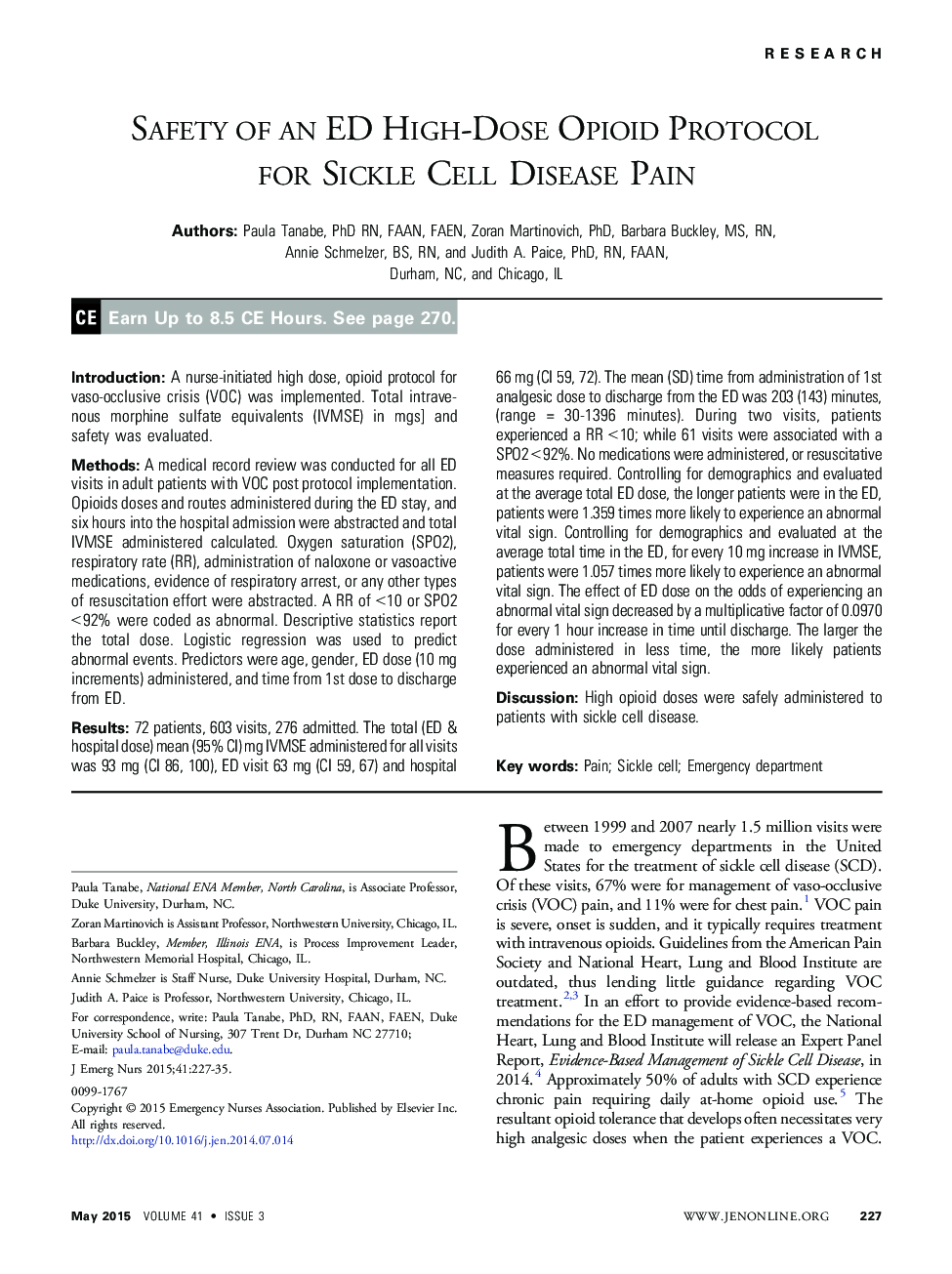| کد مقاله | کد نشریه | سال انتشار | مقاله انگلیسی | نسخه تمام متن |
|---|---|---|---|---|
| 2609619 | 1134560 | 2015 | 9 صفحه PDF | دانلود رایگان |
IntroductionA nurse-initiated high dose, opioid protocol for vaso-occlusive crisis (VOC) was implemented. Total intravenous morphine sulfate equivalents (IVMSE) in mgs] and safety was evaluated.MethodsA medical record review was conducted for all ED visits in adult patients with VOC post protocol implementation. Opioids doses and routes administered during the ED stay, and six hours into the hospital admission were abstracted and total IVMSE administered calculated. Oxygen saturation (SPO2), respiratory rate (RR), administration of naloxone or vasoactive medications, evidence of respiratory arrest, or any other types of resuscitation effort were abstracted. A RR of < 10 or SPO2 < 92% were coded as abnormal. Descriptive statistics report the total dose. Logistic regression was used to predict abnormal events. Predictors were age, gender, ED dose (10 mg increments) administered, and time from 1st dose to discharge from ED.Results72 patients, 603 visits, 276 admitted. The total (ED & hospital dose) mean (95% CI) mg IVMSE administered for all visits was 93 mg (CI 86, 100), ED visit 63 mg (CI 59, 67) and hospital 66 mg (CI 59, 72). The mean (SD) time from administration of 1st analgesic dose to discharge from the ED was 203 (143) minutes, (range = 30-1396 minutes). During two visits, patients experienced a RR < 10; while 61 visits were associated with a SPO2 < 92%. No medications were administered, or resuscitative measures required. Controlling for demographics and evaluated at the average total ED dose, the longer patients were in the ED, patients were 1.359 times more likely to experience an abnormal vital sign. Controlling for demographics and evaluated at the average total time in the ED, for every 10 mg increase in IVMSE, patients were 1.057 times more likely to experience an abnormal vital sign. The effect of ED dose on the odds of experiencing an abnormal vital sign decreased by a multiplicative factor of 0.0970 for every 1 hour increase in time until discharge. The larger the dose administered in less time, the more likely patients experienced an abnormal vital sign.DiscussionHigh opioid doses were safely administered to patients with sickle cell disease.
Journal: Journal of Emergency Nursing - Volume 41, Issue 3, May 2015, Pages 227–235
